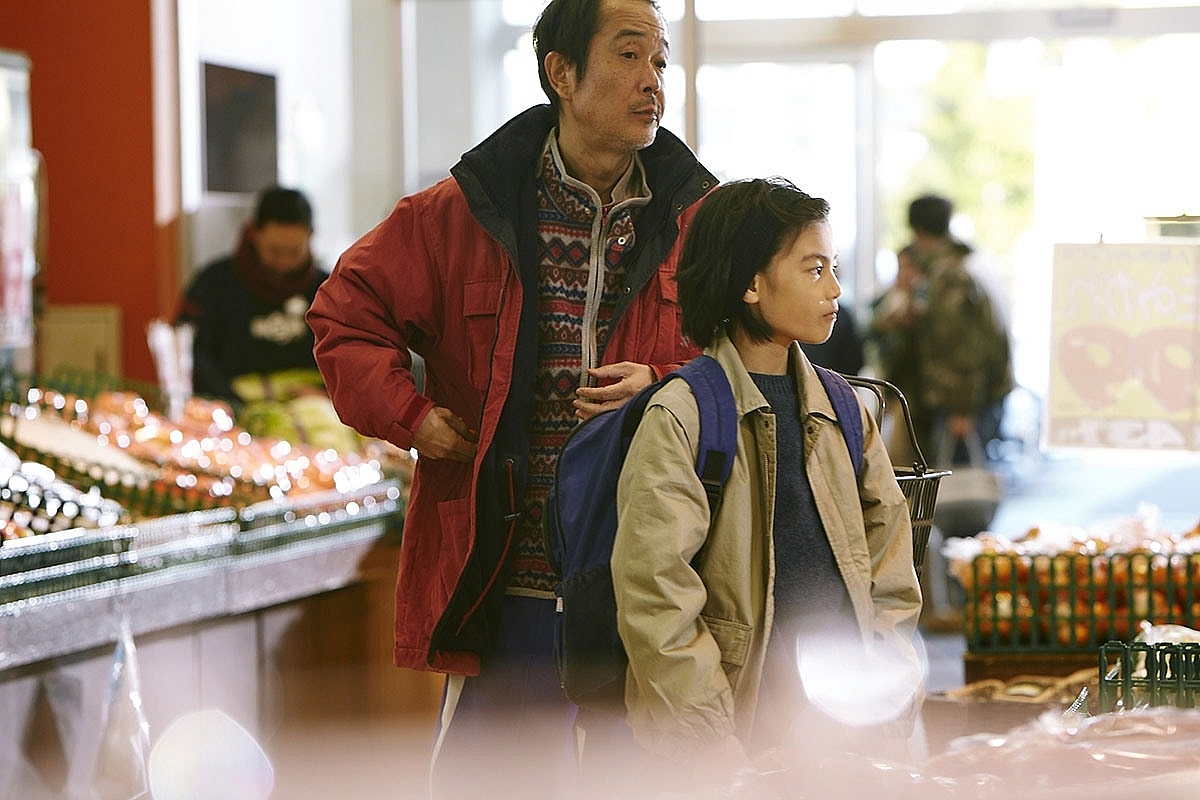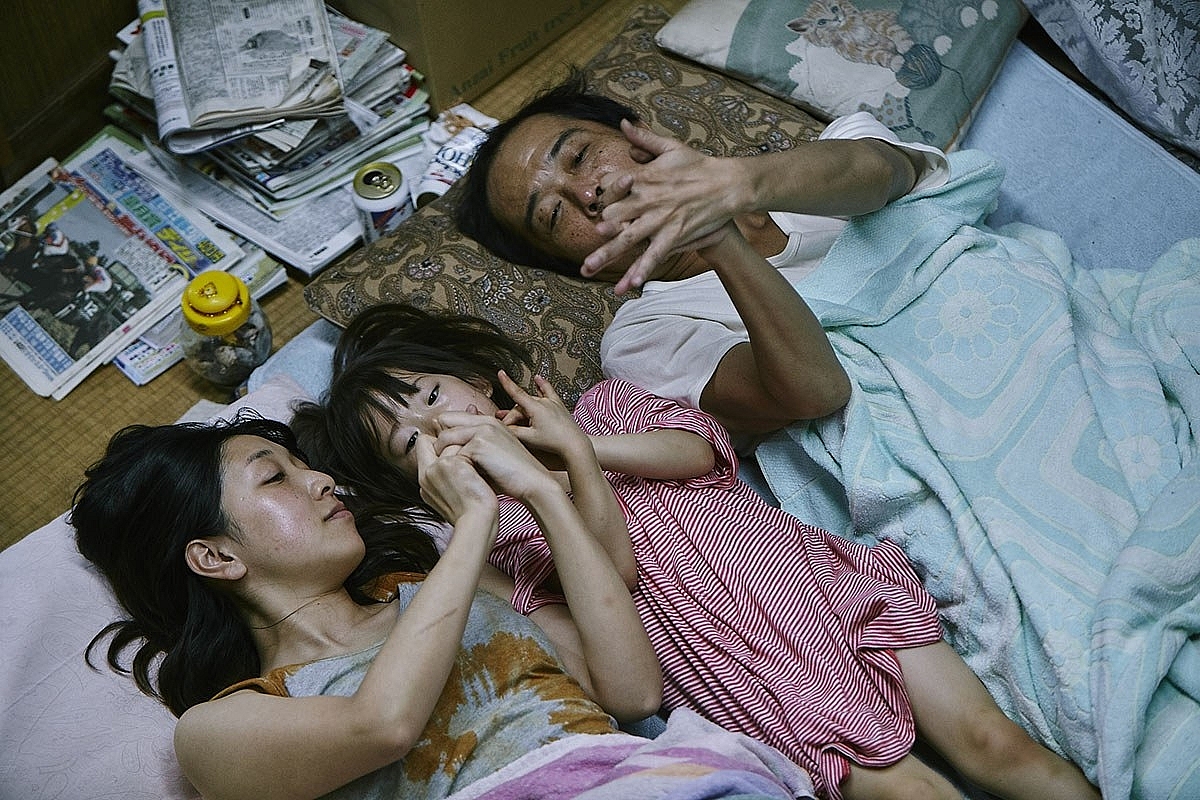Manbiki Kazoku ('Shoplifters'): Interview with DP Ryuto Kondo

(c) 2018 Fuji Television Network/GAGA Corporation/AOI Pro. Inc. All Rights Reserved.
Directed by Hirokazu Kore-eda and shot on 35mm film, Shoplifters is a gripping drama portraying ties beyond family. We asked cinematographer Ryuto Kondo why he decided to shoot on 35mm film and what it was like working with director Kore-eda for the first time.
KODAK: This was your first time working with director Kore-eda, wasn’t it?
KONDO: Yes, it finally happened. I’m really glad that our timing worked out. I had been contacted by Kore-eda in recent years for potential work on TV commercials and promotional videos. But unfortunately, our schedules never lined up until this film. We began shooting Shoplifters with the summer scenes, and as I had received the offer in advance, I was able to arrange my schedule and make it happen.

(c) 2018 Fuji Television Network/GAGA Corporation/AOI Pro. Inc. All Rights Reserved.
KODAK: Director Kore-eda has been shooting with 35mm film for many of his movies. Why did you chose to shoot on 35mm film again for this film?
KONDO: Frankly, it was because Kore-eda feels very strongly about shooting on 35mm film. Despite the limited budget, shooting on film is something Kore-eda cannot compromise on. I got the impression that the film workflow, such as changing the film roll on the set, aligns with Kore-eda’s style. It matches the flow of filmmaking that he has created. I also personally felt that the texture film gives was best suited to this movie.

(c) 2018 Fuji Television Network/GAGA Corporation/AOI Pro. Inc. All Rights Reserved.
KODAK: Was there anything that particularly impressed you?
KONDO: I was amazed by the excellence of the staff on the set, who understood and valued Kore-eda’s way of filmmaking. In the screenplay, a scene was to take place in the rain. Then, heavy snow was forecast for Tokyo on the day we were to shoot that scene. And by chance, we were able to shoot a memorable scene in the snow. The crew had no problem dealing with such total fortuity and their brilliant time management allowed us to take full advantage of the good luck that came in the form of snow. I saw how Kore-eda’s filmmaking is supported by the superb work of his staff.

(c) 2018 Fuji Television Network/GAGA Corporation/AOI Pro. Inc. All Rights Reserved.
To enrich his movie, Kore-eda edited the takes from the video assist images after each day of shooting and prepared for the next day. Based on the editing, he would change the inserts and create new scenes, and that’s how we proceeded on set. So his filmmaking wasn’t just about shooting the scenes simply according to the screenplay. Every day we could see the film increase in precision and get enriched bit by bit. I think it’s quite rare for on-set filming to proceed in this style and I felt envious of the environment on the set.

(c) 2018 Fuji Television Network/GAGA Corporation/AOI Pro. Inc. All Rights Reserved.
This film features six main characters, including children. So I thought maybe some scenes would require multi-cam shooting and asked Kore-eda whether I should use two cameras. But he told me he always uses just one camera to shoot his films, which is another thing that amazed me.

(c) 2018 Fuji Television Network/GAGA Corporation/AOI Pro. Inc. All Rights Reserved.
KODAK: How do you feel about the final on-screen result?
KONDO: The final result allowed us to rediscover the goodness of shooting on film and I think Kore-eda is satisfied with the outcome too. I certainly feel a sense of accomplishment. Considering the different situations, I shot the film using just one film type, KODAK VISION3 500T Color Negative Film 5219 in 3-perf. When it comes to shooting with film in Japanese feature film production, 3-perf has great advantages. Processing of the camera negatives was done by IMAGICA WEST and the final output by IMAGICA. When we began shooting for the summer seaside scene, the screenplay wasn’t finished and we hadn’t decided on the look of the film. Kore-eda’s previous works had a rather neat look, so I agonized whether to stick to that style or instead to enhance color saturation just a little because the story dealt with poverty and crime and had a messy feel. Kore-eda said he wanted to use blue color. I decided on the look by using viewpoints and elements which Kore-eda found during location hunting, such as the color of the corrugated metal wall surrounding the house where family lives. The scene where the main characters are on the porch looking up at the fireworks is the first shot that captures the six of them together. The image Kore-eda had in mind was a school of fish looking up from the bottom of the sea, and he was particular about the overhead shot. Blue is also the color we associate with the bottom of the ocean.

(c) 2018 Fuji Television Network/GAGA Corporation/AOI Pro. Inc. All Rights Reserved.
We had the negatives scanned at IMAGICA WEST using Cine Vivo. It was a choice between the scanners Cine Vivo and Scanity. But when we looked at the images, Cine Vivo produced a slightly softer image and I thought it better suited the texture of the film. To be honest, since we shot the movie on film, we would have liked to make the final output on print. But that was difficult considering the overall budget.

(c) 2018 Fuji Television Network/GAGA Corporation/AOI Pro. Inc. All Rights Reserved.
KONDO: Once, a cinematographer I know said the color captured on film is “memory color,” meaning that film can express the color which is in our memories. I totally agree. I believe there are colors only film can express and that the texture of film can create a certain world of its own. It is a great honor for me to have been part of a Palm d’Or winning film, and I want to keep working hard to live up to the name. I believe more people will now come to see the film because of the award, and I hope they can experience the feeling only movies shot on film can deliver.